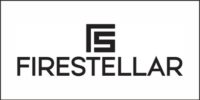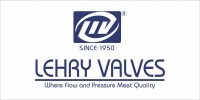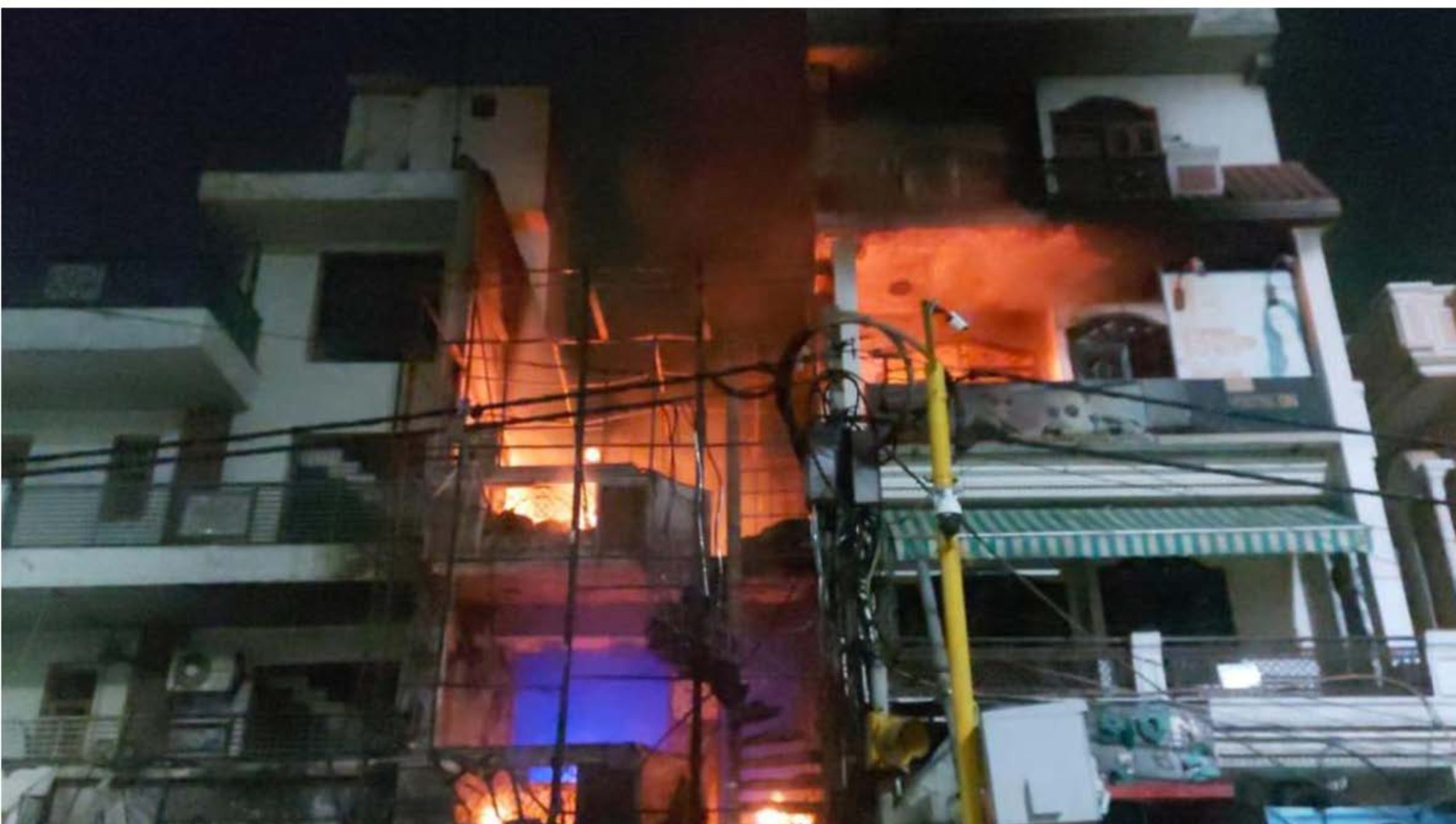 SUBJECT : Delhi Child Care Hospital Fire
SUBJECT : Delhi Child Care Hospital Fire
PLACE OF INCIDENT : Private Baby Care Centre,C-54, near ITI, Block B of Vivek Vihar, East Delhi
DATE : 25 May, 2024 (Saturday)
TIME : 11 : 30 PM (IST)
CASUALITIES : 12 newborn babies were rescued, out of which 07 were dead, 05 of them are undergoing treatment at East Delhi Advance NICU Hospital.
BUILDING STRUCTURE : A 2 storey high building
ORIGIN OF FIRE : From ground floor, after blast in an Oxygen Cylinder (assumed to be by electric spark)
Introduction –
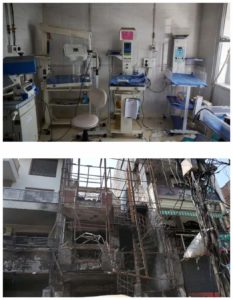 A massive fire broke out at a New Born Baby Care Hospital in Vivek Vihar, East Delhi on 25th May 2024 night, said police.
A massive fire broke out at a New Born Baby Care Hospital in Vivek Vihar, East Delhi on 25th May 2024 night, said police.- 07 newborn babies charred to death due to fire and smoke inhalation and several were injured. One of the dead infants was 25 days old while the other six were just 15 days old.
- 05 other babies in the same unit are undergoing treatment. 12 newborns were rescued when a large fire erupted at the hospital. They have been shifted to East Delhi Advance NICU hospital.
- Among the rescued, one baby remains in critical condition, relying on a ventilator for survival, while five others are admitted to the hospital undergoing treatment, the official said.
- The deceased bodies have been transferred to GTB Hospital for postmortem examinations.
Accident –
 The Delhi Fire Services said they received a call at 11.32pm.On information, police officials and firefighters reached the spot and doused the fire. The SHO, ATO Vivek Vihar, and ACP Vivek Vihar also reached the spot.
The Delhi Fire Services said they received a call at 11.32pm.On information, police officials and firefighters reached the spot and doused the fire. The SHO, ATO Vivek Vihar, and ACP Vivek Vihar also reached the spot.- The fire officer Rajendra Atwal, said, “At 11.32pm, Fire Service Control Room received information that fire broke out at a hospital, total 09 fire tenders reached the spot and fire has been extinguished completely. 2 buildings were affected by the fire, one is the hospital building and 2 floors of a residential building on the right side also caught fire.”
- According to DFS chief Atul Garg, the cause of the fire has not been determined yet. “A fire call from Baby Care Centre, near ITI, Block B of Vivek Vihar area was received. A total of 09 fire tenders were dispatched,” Garg said. 7 outs of 12 rescued babies dead, 12 newborns were rescued from the medical facility but seven of them died, DFS chief Atul Garg said. 05 babies are undergoing treatment at another hospital, he said. One of the babies was already dead before the fire call was made.
- “When we got the call, the caller requested to send more vehicles as the fire spread to the nearby buildings also,” Garg said.
- According to Atul Garg, the fire broke out in the baby centre first, so people from nearby areas had already left and there was no need to rescue the adjacent buildings.
- “It was a very tough operation. We made two teams. One team started firefighting because there was a blast of cylinders, we can say the chain of blast of cylinders. So we had to save ourselves also. We started rescue operations for babies as well. Unfortunately, we could not save all the children,” he added. Fire was extinguished in about an hour of firefighting.
Cause of fire –
- A senior Delhi Police official told that while the cause of the fire is yet to be ascertained, preliminary assessment suggests that it might have been due to a short circuit, with the presence of excessive oxygen cylinders exacerbating the situation.
Facts regarding incident –
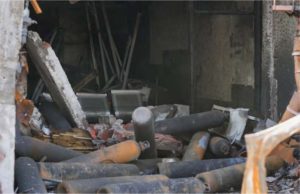 It resulted in blast in an Oxygen Cylinder on ground floor of child care hospital.’
It resulted in blast in an Oxygen Cylinder on ground floor of child care hospital.’- Most likely, the building had no NOC’: Director of fire department Director of the Delhi fire department Atul Garg said that it is most likely that the authorities did not posses a No-Objection Certificate (NOC).
- DCP (Shahdara) Surendra Choudhury told that – “The building had no fire extinguishers or emergency doors. He also said that the hospital had more than the authorised number of oxygen cylinders.
- The license of the hospital had expired in March 2024. The child care hospital was running despite its registration with the Directorate General of Health Services expiring nearly 02 months ago – officials said.
- Though the license was issued for only 05 beds, there were 12 beds when we inspected the site,” he said.
- Akash, the doctor on duty, only had a degree in ayurvedic medicine and was not qualified to provide neonatal intensive care.
Rescue Efforts –
- According to the eyewitnesses, local residents and members of an NGO, Shaheed Seva Dal were the first to rush to help.
- Some residents climbed the building from the back side and rescued some of the newborns.
- They were soon joined by fire department officials and the police.
Facts –
- No extinguishers, expired license
The private hospital, New Born Baby Care Hospital, is owned by Naveen Khichi, who holds an MD in Pediatric Medicine, and his wife Jagriti, a dentist. Apart from the seven babies who died, five other newborns admitted in the same facility were also put at risk by the flames.
- Hospital staff missing
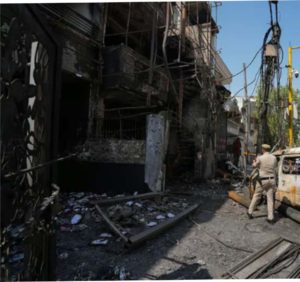 The police control room received a call at around 11:30 p.m. on Saturday night, informing them of the fire. A senior police officer told that though the police reached the hospital shortly after the call, no staff members were present at the spot.
The police control room received a call at around 11:30 p.m. on Saturday night, informing them of the fire. A senior police officer told that though the police reached the hospital shortly after the call, no staff members were present at the spot.
Shortly afterwards, the Delhi Fire Services (DFS) also reached the spot with 09 fire tenders. DFS chief Atul Garg told that – The fire spread to an adjacent boutique, the indoors and rooftop of a bank next to the hospital, an optical shop, an ambulance, and a scooter near the building before it could be put out. Another DFS official said that the fire had also caused severe damage to the residential buildings next to it.
- Citizen rescues
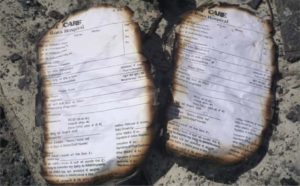 Jyotjeet Sabarwal, who heads the disaster management wing of the Bhagat Singh Sewa Dal, an NGO, told that – while the DFS was instrumental in controlling the fire, the rescue was led and carried out by local residents.
Jyotjeet Sabarwal, who heads the disaster management wing of the Bhagat Singh Sewa Dal, an NGO, told that – while the DFS was instrumental in controlling the fire, the rescue was led and carried out by local residents.
“We climbed up a ladder and broke the glass of the first floor of the building, where all 12 newborn babies were kept. When we broke in, we saw that everything around the children had caught fire — their clothes, diapers and the cot-like units where each baby was kept,” said Mr. Sabarwal.
While all 12 children were rescued, the seven babies who were placed in the cots closer to the front of the building were completely charred, he added.
- Vulnerable infants
A medical officer working in the East Delhi Advance NICU Hospital told that – the newborns, wrapped in dupattas and towels, were rushed from the blazing hospital in cabs and scooters.
“While six of them were declared brought dead, two of them were put on a ventilator, out of which one passed away on Sunday morning,” the officer added.
The medical officer said that the New Born Baby Care Hospital usually treated premature babies or those who had incurred some infection, so the babies were already in a feeble condition.
- No call from hospital
Sitara Khatun, whose baby boy died in the fire, told that he was supposed to have been released by the hospital on Sunday morning. Instead, the child’s body is now in the GTB mortuary.
“When my husband visited my child on Saturday, the doctor told him that he was doing fine and that they would release him on Sunday morning. I wish he had brought him back on Saturday, then I wouldn’t have to live to see this,” she said, weeping uncontrollably.
Another parent, whose baby is now being treated at the East Delhi Advance NICU Hospital, said that he had not received any information from the management of the New Born Baby Care Hospital regarding the tragedy. “In the last 12 hours since the hospital caught fire, we did not get one call from the hospital management,” said Mithilesh Kumar, a delivery worker.
Aftermath & followup –
- The owner of the hospital, identified as Naveen Kichi residing at 258, Bharon Enclave, Paschim Vihar, Delhi, along with the doctor on duty, was arrested on Sunday evening after going missing for over 12 hours – taken to Vivek Vihar police station in Shahdara.
- They have been booked under Sections 336 (negligence), 304 A (culpable homicide), and 34 (common intention) of the Indian Penal Code.
- “This incident of fire in a children’s hospital is heartbreaking. We all stand with those who lost their innocent children in this accident. Government and administration officials are busy providing treatment to the injured at the spot. The causes of the incident are being investigated and whoever is responsible for this negligence will not be spared, ” Delhi CM Arvind Kejriwal wrote on ‘X’ in Hindi.
- Delhi Health Minister Saurabh Bharadwaj also said strictest punishment will be given to those found negligent or involved in any wrongdoing. Saurabh Bharadwaj on Sunday directed the chief secretary to ensure a speedy inquiry into the fire incident at a private children’s hospital in east Delhi’s Vivek Vihar.
- Following the incident, Bharadwaj sent directions to Health Secretary SB Deepak Kumar and Chief Secretary Naresh Kumar. In the communication, he said directions were emailed to Deepak Kumar since he was not responding to phone calls and messages.
- He demanded a thorough inquiry to identify the people responsible for the negligence. Bharadwaj said that rescued infants would receive free treatment at top private hospitals through Farishtey scheme. To aid the affected families, he ordered quick compensation and urged authorities to speed up the arrests of those accountable for the hospital’s management.
- NCPCR (National Commission for protection of Child Rights) deploys team to investigate –The NCPCR has deployed a team to probe into the fire incident at a private children’s hospital in east Delhi’s Vivek Vihar.
- In a post on X, National Commission for Protection of Child Rights Chairperson (NCPCR) Priyank Kanoongo said the commission has taken cognisance of the fire incident and the newborns’ deaths. An NCPCR team will visit the hospital to investigate the incident, Kanoongo said.
- PM Narendra Modi tweeted about the incident: “The fire tragedy at a hospital in Delhi is heart-rending. My thoughts are with the bereaved families in this incredibly difficult time. I pray that those injured recover at the earliest”, he said.
- “In the wake of the fire tragedy at a hospital in Delhi, the Prime Minister has announced that an ex gratia of Rs. 2 lakh from PMNRF (Prime Minister’s National Relief Fund) would be given to the next of kin of each deceased. Rs. 50,000 would be given to each of those injured,” the Prime Ministers’ office posted on X.
- Congress leader Rahul Gandhi on Sunday called death of 07 infants in the fire incident at New Born Baby Care Hospital in Vivek Vihar “extremely heartbreaking”. “My deepest condolences to all the grieving parents and relatives. I hope that the injured children recover and get well as soon as possible,” Rahul said in a post on X.
- A day after a blaze erupted at the New Born Baby Care Hospital in Vivek Vihar killing 07 infants, additional chief secretary and revenue secretary Ashwini Kumar ordered a magisterial inquiry into the incident. Kumar directed the district magistrate (Shahadra) to ascertain the circumstances that led to the tragedy, and recommend measures to prevent such incidents in the future.
- President Droupadi Murmu on Sunday conveyed her heartfelt condolences. “The news of death of many children due to fire in a hospital in Vivek Vihar, Delhi is heart- rending. May God give strength to the bereaved parents and relatives to bear this shock. I pray for the speedy recovery of other children injured in this incident,” the president said in a post on X.
- NCPCR chief blames authorities for tragedy – “The way oxygen was being filled in the hospital was hazardous. Our member visited the hospital and will be submitting her report soon and then we will be issuing a notice to Delhi government in the matter,” PTI quoted Kanoongo as saying in a video message. The NCPCR chief further accused the Delhi government of not paying attention to the notice of the commission in 2021, which recommended regular fire safety audits at hospitals which had Neonatal Intensive Care Unit, Pediatric Intensive Care Unit, and Special Newborn Care Unit, among other medical facilities for children.
Another Such Previous Incident –
- Delhi children’s hospital owner Dr Naveen Khichi has history of negligence
- Hospital was unregistered and fined in 2021
- UP couple accused him of abuse of newborn during treatment
 In 2021, a case was registered against Khichi under Sections 325 (punishment for the offence of voluntarily causing grievous hurt to a person), 506 (punishment for criminal intimidation) and 34 (acts done by several people in furtherance of common intention) of the Indian Penal Code (IPC), and Section 75 (any person having control of the child, assaults, abandons, abuses or willfully neglects the child) of the Juvenile Justice Act. The case was about his hospital not being registered and the alleged mistreatment of a newborn during treatment at the children’s hospital.
In 2021, a case was registered against Khichi under Sections 325 (punishment for the offence of voluntarily causing grievous hurt to a person), 506 (punishment for criminal intimidation) and 34 (acts done by several people in furtherance of common intention) of the Indian Penal Code (IPC), and Section 75 (any person having control of the child, assaults, abandons, abuses or willfully neglects the child) of the Juvenile Justice Act. The case was about his hospital not being registered and the alleged mistreatment of a newborn during treatment at the children’s hospital.- The FIR was filed by a couple from Uttar Pradesh’s Hathras, who had admitted their newborn to the New Born Baby Care Hospital. They alleged that the baby’s left hand was fractured during treatment. Determined to find out the cause, the couple acquired CCTV footage and saw a nurse beating the newborn. When they went to Khichi, the latter allegedly threatened them.
- During an investigation, it was discovered in 2021 that the hospital was not registered under the Delhi Nursing Home Act, which mandates all nursing homes and hospitals in the national capital should meet certain standards and obtain official registration.
- However, the issue was resolved swiftly after authorities imposed a fine on the children’s hospital. After the fine was paid, regular treatment began.
Delhi Child Hospital Fire
Type of Building: Institutional Building
(Group C)
Subdivision: C1 (Hospitals and Sanatoria)
Infrastructure (Upto Ground plus one storey with beds)
Active Fire-Fighting Measures (As per NBC)
- Extinguisher
- First Aid Hose Reel
- Automatic Sprinkler System
- Manually Operated Fire Alarm Systems
- Automatic Detection and Alarm Systems
- Terrace Tank Over Respective Tower Terrace ( 5000 L)
Passive Fire-Fighting Measures (As per NBC)
- Smoke Control (Smoke Exhaust and Pressurization of Areas Above Ground)
- Exit access corridors shall be provided with 60 min fire resistant wall and 20 min self-closing fire doors along with all fire stop sealing of penetrations.
- Smoke exhaust system having make-up air and exhaust air system or alternatively pressurization system with supply air system for these exit access corridors shall be required.
- All exit passageway (from exit to exit discharge) shall be pressurized or naturally ventilated. All such exit passageway shall be maintained with integrity for safe means of egress and evacuation. Doors provided in such exit passageway shall be fire rated doors of 120 min rating.
- The smoke exhaust fans in the mechanical ventilation system shall be fire rated, that is, 250°C for 120 min.
Thermal Detectors: These shall be installed into fume hoods of large kitchens for hospitals.
NOTE:
- No combustible material of any kind shall be stored or used in any building or section there of used for institutional occupancy. The common path of travel shall be 30 m. The maximum dead end of corridor distance shall not exceed 6 m.
- Doors in fire resistant walls shall be so installed that these may normally be kept in open position, but will close automatically.
- Corridor door openings shall be not less than 2.0 m in width of double swing double leaf type door. A coordinator shall be provided as above, for closing of double leaf in case of emergency.
- Compartmentation for C-1 building shall not be more than 1800 m2. Each compartment shall be able to accommodate, in addition to its own, the patients from adjoining compartment also considering 3.5 m2 per person. If patients are not bed-ridden, a factor of 0.6 m2 per person is recommended.
- Aisles, corridors, ramps, etc. through which patients are moved, shall have a minimum width of 2.4 m throughout. Aisles, corridors, and rampsin other areas not intended for the housing, treatment, or use of inpatients shall be not less than 1.5 m in width.
- Any sleeping accommodation or suite exceeding 100 m2 in area shall have at least two doorways leading to the exit access corridors.
- Exit access corridors from a compartment to another compartment shall be divided at the compartment intersection by a fire door of 120 min fire rating in the fire compartment wall.
In order to ensure Fire Safety and safer evacuation of occupants, it’s important that all the measures mentioned in the NBC are thoroughly implemented.
Compliance
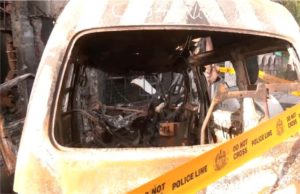 The Importance of Fire Safety Compliance: Fire Safety Compliance measures are designed to prevent fires, ensure the safety of occupants, and minimize property damage in the event of a fire outbreak. Compliance with fire safety regulations is not only a legal requirement but also a moral responsibility. By adhering to fire safety standards, you are prioritizing the well-being of individuals and creating a secure environment.
The Importance of Fire Safety Compliance: Fire Safety Compliance measures are designed to prevent fires, ensure the safety of occupants, and minimize property damage in the event of a fire outbreak. Compliance with fire safety regulations is not only a legal requirement but also a moral responsibility. By adhering to fire safety standards, you are prioritizing the well-being of individuals and creating a secure environment.
Conducting Fire Risk Assessments: A fire risk assessment is a systematic evaluation of potential fire hazards and the measures in place to prevent them. It helps identify areas of concern and suggests necessary improvements to ensure safety compliance. Conducting regular fire risk assessments is essential to stay updated with any changes in the environment and to address potential fire hazards proactively.
Regulatory Adherance: Complying with fire safety regulations is non-negotiable for any responsible entity. Failure to adhere to these regulations can result in severe consequences, including legal liabilities, fines, or even closure of business operations. Regulatory bodies, such as fire departments or building code authorities, regularly inspect premises to ensure compliance. Therefore, it is essential to understand and implement the relevant codes and standards applicable to your specific industry and location.
Response
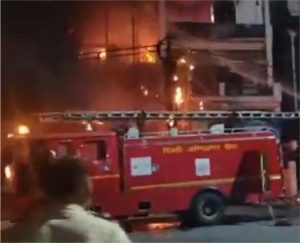 Training staff on fire suppression systems equips them with the knowledge and skills needed to respond swiftly and appropriately in case of a fire emergency, as this can allow them to learn how to operate fire extinguishers, activate fire alarms, and use other suppression equipment effectively.
Training staff on fire suppression systems equips them with the knowledge and skills needed to respond swiftly and appropriately in case of a fire emergency, as this can allow them to learn how to operate fire extinguishers, activate fire alarms, and use other suppression equipment effectively.
Proper training also includes understanding the behaviour of fire, evacuation procedures, and how to prevent fires from spreading.
Fire safety training is essential for all employees, regardless of their role or level within an organization. From office workers to factory personnel, everyone should have a basic understanding of fire prevention, evacuation procedures, and how to operate fire suppression equipment.
By providing comprehensive fire safety training to your entire staff, you can create a culture of safety and empower people to respond appropriately in case of a fire emergency.
In order to ensure a well-rounded fire safety training program within any organization, there are few tips that can provide a strong baseline for comprehensive employee fire safety training:
- Recognizing Fire Hazards
- In Case of Fire in the Workplace
- Types of Workplace Fires & How to Suppress Them
- Learning How to Engage Manual Activation Fire Alarms
- How to Use a Fire Extinguisher
- Creating Thorough Evacuation Plans
- Avoiding Unnecessary Risk
Electrical Hazards
Electric shocks: Electric shocks are one of the most dangerous electrical hazards in a hospital, especially for patients and staff. They can be caused by a variety of factors, such as improper handling of electrical equipment or exposure to exposed or damaged electrical wiring. Electrical shocks can cause minor or severe burns, damage to the central nervous system and even death.
Action protocol
 Before: It is important to conduct an electrical risk assessment to identify risk points in a hospital and take preventive measures. Train medical and housekeeping staff on electrical hazards, including identification of faulty electrical equipment and safe handling of electrical cables.
Before: It is important to conduct an electrical risk assessment to identify risk points in a hospital and take preventive measures. Train medical and housekeeping staff on electrical hazards, including identification of faulty electrical equipment and safe handling of electrical cables.
During: In the event of an electric shock, it is crucial to immediately shut off the electrical supply and remove the patient or staff from the danger area. Then provide emergency medical care and call in specialised personnel to inspect and repair faulty electrical wiring or electrical equipment.
After: At this point it is always necessary to make an assessment of the incident and take measures to prevent future electric shocks, such as implementing additional safety measures and training
Circuit overloading: Another of the most common hazards is circuit overloading. This can be caused by the overuse of electrical equipment or the use of poor quality extension cords or electrical cables.
Action protocol
Before: A quality control system must be implemented to ensure that all electrical equipment complies with electrical safety standards. In addition, train medical and cleaning staff on the dangers of overloaded circuits and promote responsible use of electrical equipment.
During: If a circuit overload is detected, it is important to immediately shut off the power supply and remove electrical equipment from the danger area. Then call specialist personnel to repair or replace faulty electrical equipment.
After: Conduct an assessment of the incident and take measures to prevent future circuit overloads, such as implementing circuit monitoring systems and promoting responsible use of electrical equipment.
Electromagnetic interference: Electromagnetic interference is an electrical hazard that can affect the accuracy and performance of medical equipment. It can be caused by interference from other nearby electrical equipment, such as mobile phones, radios, etc.
Action protocol
Before: Conduct an electrical risk assessment to identify medical equipment vulnerable to electromagnetic interference and take preventive measures, such as physical separation of equipment or use of interference shields.
During: Disconnect affected medical equipment and call specialist personnel to inspect and repair affected equipment.
After: The last step of the action protocol would be to complete an assessment of the incident and take measures to prevent future electromagnetic interference, such as implementing interference.
Power failures: Power failures can be caused by a number of factors, such as thunderstorms, power outages and grid problems. This is a risk that needs to be controlled because it can disrupt the operation of medical equipment and endanger the lives of patients.
Action protocol
Before: It is essential to have measures in place to prevent power failures, such as the installation of back-up power systems and regular testing of the hospital’s electrical system.
During: When a power failure occurs, immediately activate the back-up power system and prioritise the use of essential medical equipment. In addition, inform patients and staff about the situation and take measures to ensure their safety, such as providing emergency lighting and adequate ventilation.
After: After the event, conduct an assessment of the incident and take measures to prevent future power failures, such as upgrading the hospital’s electrical system and implementing emergency contingency plans.
Investigation By:
Satish Patle, Anuraag Singh, Ajmeera Shashank












